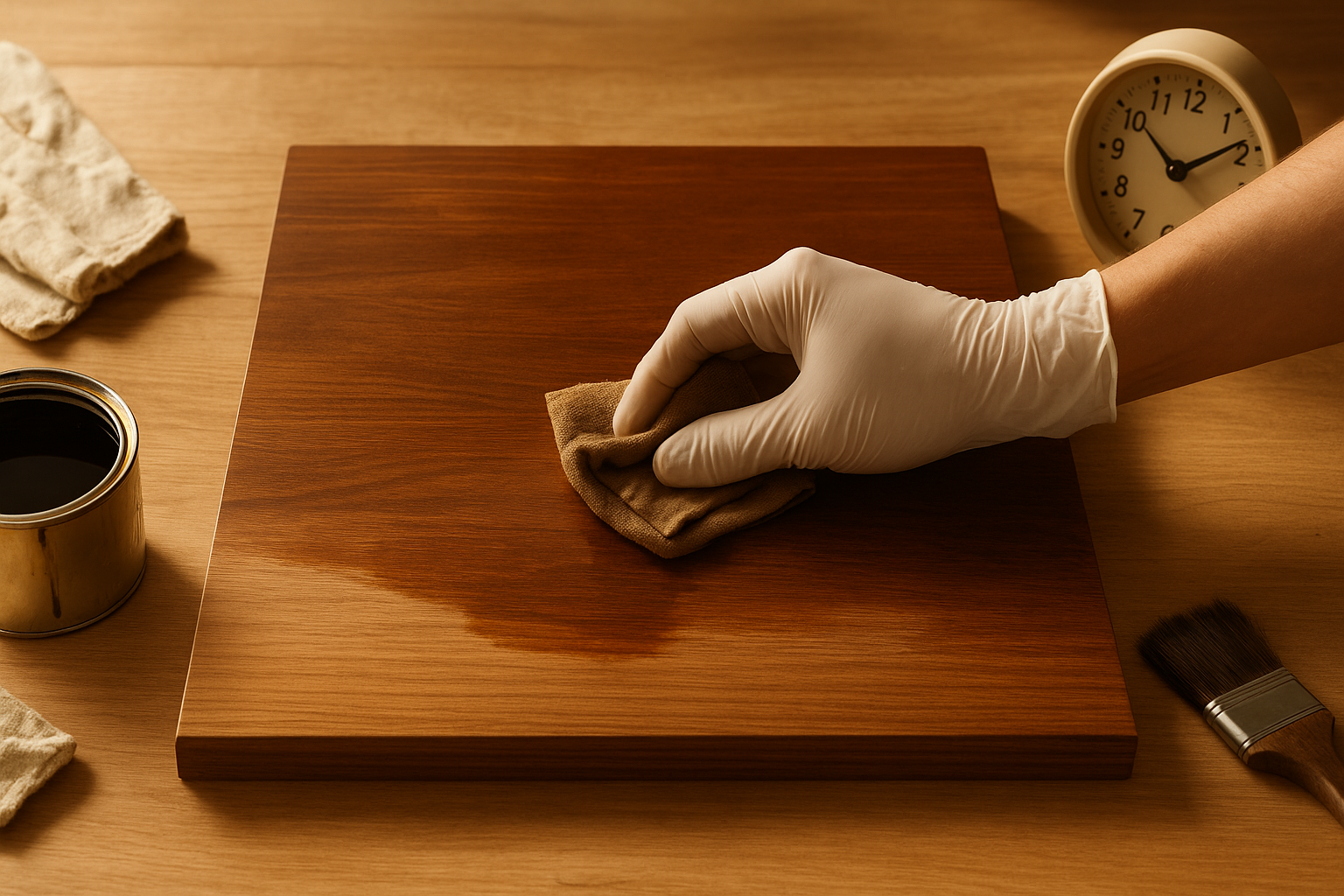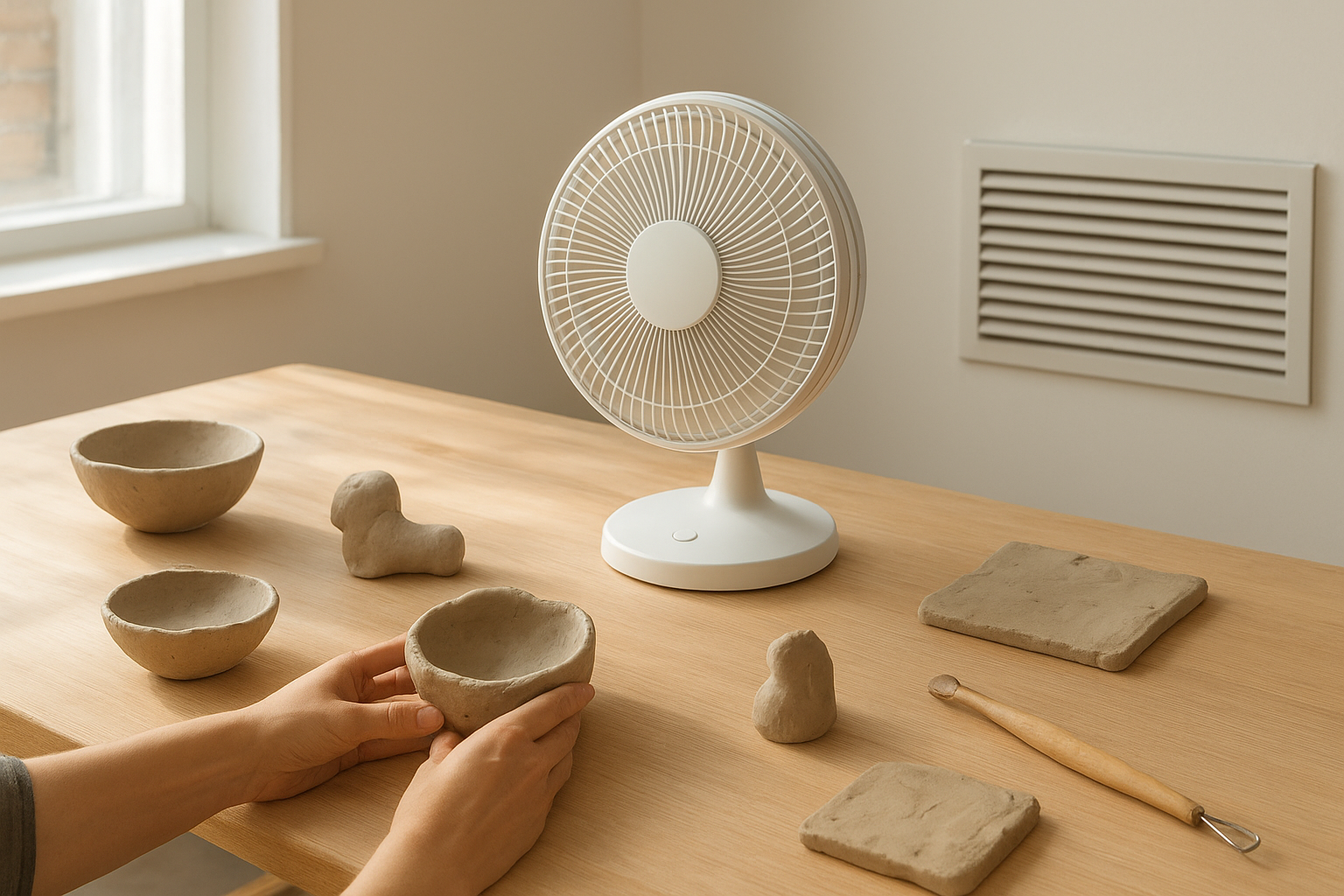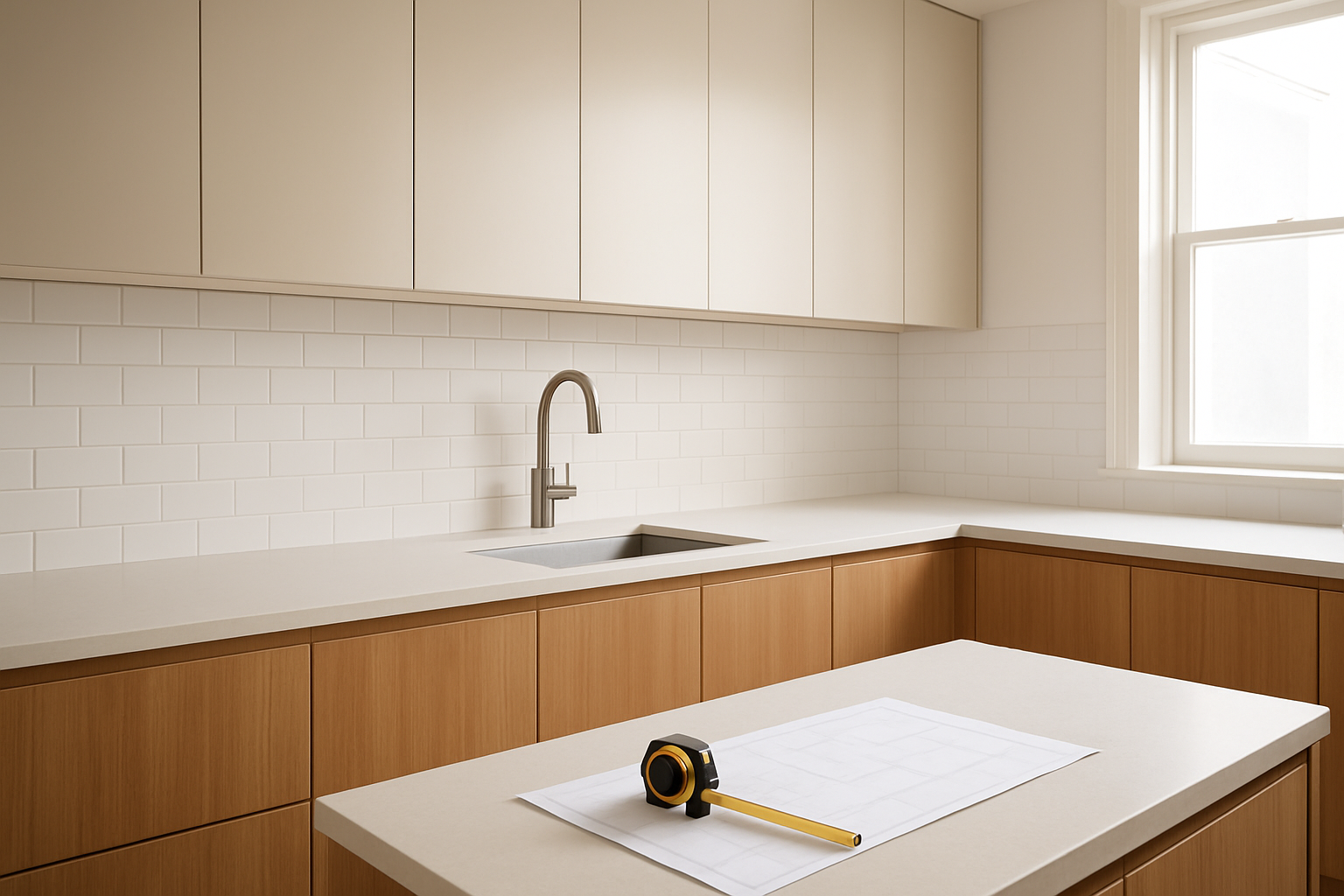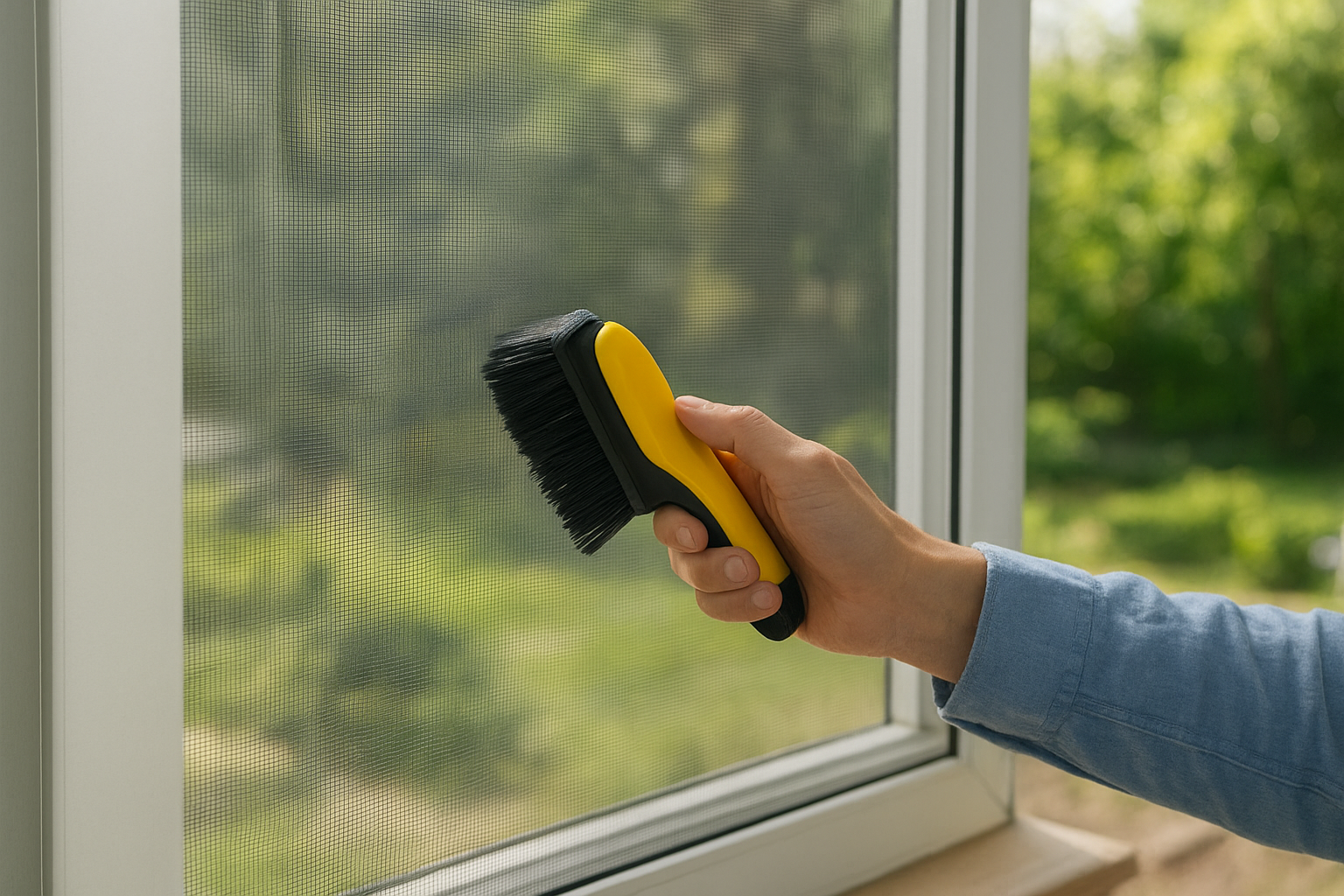Let’s be real — window screens are heroes we rarely thank. They filter dust, pollen, and bugs so we can enjoy fresh air, but they also trap all that grime over time. One look at a dusty, grey screen can ruin even the cleanest view. The good news? You don’t need to remove them to bring that crisp, clear look back.
Here’s how to clean window screens quickly, safely, and without any complicated tools or messy takedowns.
🧼 What’s the Best Way to Clean Window Screens?
The best way to clean window screens is by vacuuming loose dust, gently scrubbing with warm soapy water or vinegar, and wiping dry with a microfiber cloth. It’s fast, effective, and doesn’t require removing your screens.
This method keeps things easy — no ladders, no hose disasters, and no taking apart window frames.
🧰 What You’ll Need Before You Start
Cleaning screens is simple when you’ve got the right tools. Here’s your setup:
- Soft-bristle brush or old toothbrush 🪥
- Mild dish soap or vinegar
- Warm water
- Microfiber cloth
- Vacuum with brush attachment
- Spray bottle or light mist hose
- Optional: Baking soda for stubborn dirt
💡 Pro tip: Avoid harsh detergents or ammonia-based cleaners — they can wear out the mesh and leave streaks that attract more dust.
🚿 How to Clean Window Screens Without Removing Them (Step-by-Step Guide)
This method is ideal for apartment dwellers, renters, or anyone who doesn’t want to wrestle with screen frames.
Step 1: Vacuum Away Dust
Start by vacuuming both sides of your screens using a brush attachment. This removes loose dirt, cobwebs, and pollen buildup instantly.
Step 2: Mix a Gentle Cleaning Solution
In a spray bottle or bucket, combine warm water with a few drops of dish soap — or go natural with equal parts vinegar and water.
Step 3: Scrub the Screens Gently
Dip a soft brush into your cleaning mix and scrub in small circular motions. Pay attention to corners where grime builds up.
Step 4: Rinse Lightly
Use a spray bottle or light hose setting to rinse off the soap. Avoid high pressure — it can stretch or tear delicate mesh.
Step 5: Wipe Down Frames and Edges
Don’t forget the frames! Wipe them with a damp cloth to remove dirt and water spots.
Step 6: Dry Thoroughly
Pat the screens dry using a clean microfiber towel. If possible, leave the windows open for a few hours so air can finish the job.
🧽 Want a Deep Clean? Here’s How to Wash Removable Screens
If your screens pop out easily, go for a deeper wash once or twice a year.
- Gently remove the screen and place it on a towel or grassy area.
- Rinse both sides with a hose using low pressure.
- Scrub with a soapy brush, rinse again, and let it air dry completely.
- Reinstall once dry — no streaks, no water spots.
This deeper method is ideal for spring cleaning or after stormy seasons when grime builds up faster.
💡 Tips to Keep Screens Cleaner for Longer
- Vacuum monthly: Prevents buildup before it becomes visible.
- Use dryer sheets: Lightly wipe screens with a dryer sheet to repel dust.
- Avoid cooking near open screens: Grease travels farther than you think.
- Store screens during winter: Keeps them protected from snow and condensation.
These small habits make your next clean-up almost effortless.
⚠️ Common Mistakes to Avoid
Even simple cleaning jobs can go wrong with a few rookie errors. Avoid these:
- High-pressure water: It can warp or tear your screens.
- Direct sunlight cleaning: Heat causes quick drying and streaks.
- Skipping the drying step: Damp screens invite mildew and dust.
- Using harsh chemicals: They strip mesh coating and reduce lifespan.
A little care goes a long way — your screens will stay stronger and clearer for years.
🌿 Natural DIY Screen Cleaner Recipe
If you prefer chemical-free cleaning, mix this eco-friendly solution:
- 2 cups warm water
- ½ cup white vinegar
- 1 tablespoon baking soda
It cuts through grime and deodorizes without residue — perfect for allergy-prone homes.
🧠 Quick FAQ
How do I clean window screens without removing them?
Vacuum dust, scrub gently with soapy water, and wipe dry — no removal needed.
Can I use Windex or glass cleaner on screens?
Not recommended — they can leave streaks and sticky residue that attracts more dust.
What’s the best way to clean both windows and screens?
Clean the screens first to prevent dirt from transferring to your freshly cleaned glass.
How often should I wash screens?
Once every three months for urban areas, or twice yearly for rural homes.
🪟 Why Cleaning Screens Regularly Matters
Clean screens don’t just make your view better — they improve indoor air quality, allow maximum sunlight, and reduce allergens that sneak indoors. Over time, neglect can cause corrosion or dull mesh, meaning replacements cost more than a simple scrub ever will.
Think of it as low-effort home therapy — fresh air, clear views, and peace of mind.
🌞 Final Thoughts
A spotless screen changes how your home feels — brighter, fresher, and more open. You don’t need expensive products or special tools, just a bit of patience and the right technique.
If you love giving your home that “just-cleaned” glow, you’ll also enjoy our guide to Shower Curtain Dimensions — perfect for perfecting your bathroom look. And if you’re into bigger home projects, check out Different Types of Ceilings to refresh your interiors.












